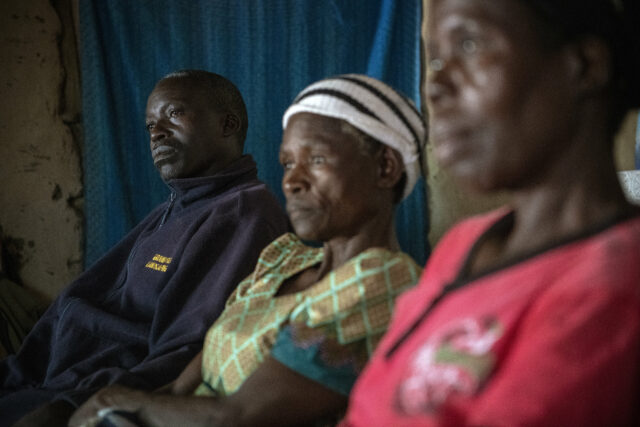
Agricultural mechanization transforming East and Southern Africa's farming sector
Agriculture plays a vital role in the economies of East and Southern Africa, with most of the population depending on farming for their livelihoods, traditional farming methods have often limit productivity and profitability. In recent years, the region has witnessed a remarkable transformation towards smallholder agricultural mechanization, enabling farmers to overcome labour bottlenecks and harness new income opportunities.
The International Maize and Wheat Improvement Center (CIMMYT) is leading the Workpackage that seeks to diversify and sustainably intensify maize-based farming systems of the Ukama Ustawi Initiative on Diversification in East and Southern Africa. The aim of this Workpackage is to foster Climate-Smart Agriculture technologies amongst rural farming communities including mechanization which CIMMYT has gained experience over the last 10 years in Africa. CIMMYT is currently targeting more than 200 mechanization Service Providers in different projects with appropriate-scale mechanization solution to change mostly manual to mechanized farming.
This blog explores the potential impact of mechanization in East and Southern Africa and how it is revolutionizing the farming sector, as well as what Africa can learn from Asia about agricultural mechanization.
Enhanced productivity
Agricultural mechanization can significantly enhance productivity in East and Southern Africa. Mechanized tools and equipment, such as small 2-wheeled tractors, direct seeders, shellers and threshers, and irrigation systems, have made farming operations more efficient and less labor-intensive. By reducing manual labor requirements, farmers – including women and youth – can cultivate larger areas of land, increase crop yields, and optimize resource utilization. This boost in productivity not only ensures food security for the region but also creates opportunities for surplus production and income generation. It also holds the potential to free up the time of women, who still are responsible in the majority of the cases for care work in Africa. This can contribute to society as a whole beyond agricultural productivity.
Improved crop quality
Mechanization has also played a critical role in improving crop quality and striving towards achieving SDG goals. Traditional farming methods often result in inconsistent crop management and pest control, often leading to lower-quality crops. With mechanized planting and spraying equipment, farmers can achieve more precision in operations, ensuring consistent and optimal plant spacing, accurate seed depth, and targeted pest management. This precision ultimately leads to higher-quality produce and improving marketability.
Reduced post-harvest losses
Post-harvest losses have been a major challenge for farmers in East and Southern Africa, resulting in approximately 30% in economic losses and food waste. Mechanization has helped address this issue by introducing efficient harvesting, threshing, and storage technologies. Furthermore, mechanized threshing and storage solutions minimize post-harvest losses caused by inadequate processing and storage conditions, extending the shelf life of agricultural produce and ensuring higher profits for farmers. Post-harvest operations are also oftentimes laborious and tedious tasked carried out by women, so contributing to the mechanization of post-harvest operations can help benefit and empower women.
Enhanced rural livelihoods
The adoption of agricultural mechanization has had a positive impact on rural livelihoods in East and Southern Africa. Mechanization has created employment opportunities in equipment sales, maintenance, and repair services, thereby fostering entrepreneurship and income diversification. Additionally, increased productivity and profitability enable farmers to invest in their businesses, improve their living standards, and contribute to the overall socio-economic development of their communities. Moreover, the introduction of mechanization has attracted youth to the agricultural sector, reversing the trend of rural-to-urban migration and revitalizing rural economies.
Agricultural mechanization has brought about a revolution in East and Southern Africa’s farming sector. From increased productivity and improved crop quality to reduced post-harvest losses and enhanced rural livelihoods, the benefits are evident. However, challenges remain, such as accessibility to mechanization technology, affordability, and adequate training and support for farmers. Governments, international organizations, and the private sector should collaborate to address these challenges and ensure that the benefits of agricultural mechanization reach all farmers, particularly smallholders. By harnessing the potential of mechanization, East and Southern Africa can continue to transform its agriculture sector, ensuring sustainable food production and economic growth for years to come.
Filters
-


 2022
2022Agricultural mechanization transforming East and Southern Africa's farming sector
CGIAR Initiative on Diversification in East and Southern Africa -

 2022
2022“Disruptive Seeds” Approach to Radically Ignite Guatemala’s Food System Transformation through Local, Bottom-Up Solutions
CGIAR Initiative on Climate ResilienceIn Guatemala, we are applying the Disruptive Seeds approach – a framework that identifies niche initiatives or practices that exist… -

 2022
2022Zambia’s Climate Monitoring Innovations Strengthen Climate Adaptation and Mitigation by Breaking Silos Through Key Knowledge Products
CGIAR Initiative on Climate ResilienceIn Zambia, droughts and floods have escalated over the last two decades, threatening food and water security, energy generation, and… -


 2022
2022About US$30 million to be unbolted by ClimBeR & AGNES’ critical partnership for transboundary climate financing in Horn of Africa
CGIAR Initiative on Climate ResilienceClimate finance access is a major constraint to climate mitigation, adaptation, and security efforts in the Horn of Africa (HoA),… -

 2022
2022Implementation of climate services at national scale promotes behavior changes in the public sector in Guatemala
CGIAR Initiative on Climate ResilienceIn Guatemala, Local Technical Agroclimatic Committees (MTAs) build inclusive dialogue between farmers, extension services, public and private sector r… -




 2022
2022Climate Security Workshop Paves the Way to Pivotal Change in Kenya’s Climate-Smart Agriculture Stakeholder Group
CGIAR Initiative on Climate ResilienceTo integrate climate security into Kenya’s climate action strategies, CGIAR’s Climate Resilience Initiative (ClimBeR) organized a workshop involvi…
